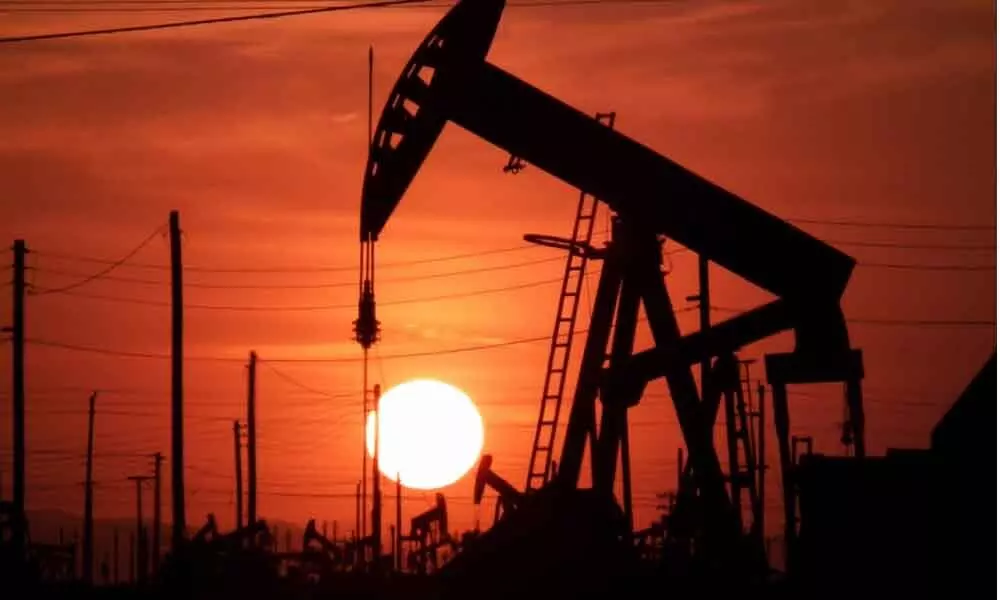Oil prices may ruin winter fun in Europe
A combination of strong demand and weak supply is sending crude toward $80 a barrel. That won’t help those already worried about gas and electricity prices
image for illustrative purpose

Fears of an oil glut are receding, as stronger demand and curtailed supply are set to tighten the market and lift prices. It's going to be a good winter for oil producers, but a further hit to consumers who are already reeling from soaring gas and electricity costs.
The surge in natural gas prices, which has seen the costs of both liquefied supplies and pipeline deliveries to European markets jump to records, is starting to have knock-on effects on the oil market. Consumers are seeking to switch away from pricey natural gas and to marginally less expensive oil.
Vitol Group, the world's biggest independent oil trader, expects fuel switching to boost oil demand by half a million barrels a day this winter. Consultants Facts Global Energy see a similar increase, with Chinese trucks, Asian power generators and oil refineries around the world all seeking cheaper alternatives to the gas they now use. The Organization of the Petroleum Exporting Countries sees a slightly smaller impact, estimating the additional demand over the next two quarters to be 370,000 barrels a day.
Deutsche Bank AG sees soaring prices for gas, electricity and coal creating the potential for fuel switching in power plants during the coming winter, although it notes that capacity to do that in Europe is limited.
These numbers may not seem huge, but oil demand will get yet another kick in the coming months. The recent US decision to allow in visitors from Europe and the UK from November will give a much-needed boost to trans-Atlantic aviation. Long-haul air travel has been one of the last segments of oil demand to recover from the Covid-19 pandemic, with commercial flights still more than 20 per cent below comparable 2019 levels, even as traffic congestion and demand for road fuels have surpassed their pre-lockdown levels. Consultants JBC Energy peg the increase in jet fuel demand in the final three months of the year at 400,000 barrels a day.
It's not just upward revisions to demand expectations that will lift oil prices either. The supply side is doing its bit, too. Hurricane Ida tore through the Gulf of Mexico oil patch at the end of August, before cutting a path of destruction across the US It initially forced the shut-in of more oil production than any previous storm, curtailing 30 million barrels of the region's output over the last month. That's the same amount that was lost over comparable periods to both of the big two-storm combinations - Katrina and Rita in 2005, Gustav and Ike in 2008 - that have struck the Gulf since it became a major oil producing region.
And Ida's impact isn't over yet. Production will remain about 300,000 barrels a day below normal as Royal Dutch Shell Plc works to repair the West Delta-143 transfer station, which handles crude from its Mars, Ursa and Olympus platforms. Flows won't be fully restored until early next year.
The contribution to supplies from OPEC and its allies are also likely to disappoint. Although the group plans to raise production by 400,000 barrels a day each month - with the increase for November expected to be rubber-stamped when it meets via video conference on October 4 - several of its members have been unable to boost output in line with their rising targets.
Chief among those are west African producers Angola and Nigeria, where production rates have been going in the opposite direction. Questions have also been raised about Russia's ability to boost output, after production stagnated since April despite the country's rising allowance.
Increases in targets planned for the rest of the year would take production in Saudi Arabia and Russia, the OPEC+ group's two biggest members, above 10 million barrels a day. That's getting very close to pre-pandemic plateau levels, particularly for Saudi Arabia.
And then there's Iran. Any lingering expectations of an increase in the Islamic Republic's oil exports before year-end have all but evaporated. The new Tehran government says that nuclear talks with six world powers will resume in the "next few weeks," but that's unlikely to lead to a breakthrough in time to start raising output this year.
Mash all of these indicators of stronger demand and weaker supply together, and it's not difficult to see why benchmark Brent crude is at a near three-year high and heading toward $80 a barrel. Were it not for concerns about inflation and a tapering of economic stimulus measures, we'd surely have passed that milestone already. Get ready to pay up to drive, as well as stay warm, this winter.

